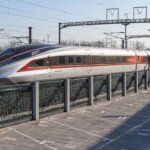China’s Data Center Boom Turns to Bust: Why Is There So Much Surplus Capacity?
In recent years, China embarked on an ambitious campaign to build out its digital infrastructure, pouring billions of dollars into new data centers across the country. This rapid expansion, fueled by both government and private investment, was meant to position China as a global leader in artificial intelligence (AI), cloud computing, and advanced digital services. However, the result has been a glut of underused facilities, with utilization rates languishing between 20% and 30%. Now, the Chinese government is proposing a bold new solution: a nationwide cloud network to redistribute and monetize this surplus computing power.
- China’s Data Center Boom Turns to Bust: Why Is There So Much Surplus Capacity?
- What Caused China’s Data Center Overcapacity?
- Economic and Technical Challenges of the Surplus
- The National Cloud Network: China’s Solution to the Surplus
- Regulatory Crackdown: Stricter Controls and New Standards
- Technical Hurdles: Latency, Hardware Diversity, and Integration
- Economic and Strategic Implications: AI, Industrial Policy, and Global Competition
- Industry Response: Consolidation, Innovation, and the Road Ahead
- Broader Lessons: Central Planning vs. Market Realities
- In Summary
The story of China’s data center surplus is a cautionary tale of speculative investment, shifting technology trends, and the challenges of centrally planned infrastructure in a fast-moving industry. Understanding how China arrived at this point—and what it hopes to achieve with its new national cloud initiative—offers insight into the country’s broader technological ambitions and the hurdles it faces on the global stage.
What Caused China’s Data Center Overcapacity?
The roots of the surplus lie in the “Eastern Data, Western Computing” initiative, launched in 2022. The plan encouraged local governments and companies to build data centers in China’s less populated, energy-rich western regions, with the goal of serving the booming economic zones in the east. The logic was simple: electricity is cheaper in the west, and moving compute-intensive workloads there could reduce costs and support the east’s digital economy.
But the reality proved more complicated. Many local governments, eager to attract investment and boost regional economies, rushed to approve and fund data center projects—often without a clear understanding of market demand or the technical requirements for AI and cloud workloads. As a result, hundreds of large-scale data centers sprang up, many in remote locations far from major customers.
At the same time, the global excitement around generative AI and large language models (like ChatGPT) led to a frenzy of chip buying and infrastructure building. Companies and government agencies scrambled to acquire high-end GPUs from Nvidia and domestic alternatives like Huawei’s Ascend chips, hoping to cash in on the AI boom. But as the market cooled and the focus shifted from building massive AI models to using them efficiently, demand for raw computing power dropped sharply.
According to industry analysts, up to 80% of newly built computing resources in China remain unused. Many facilities were constructed to qualify for government subsidies or to secure loans and tax incentives, rather than to meet real business needs. Some operators exploited these incentives without ever intending to run large-scale AI workloads. The result: a landscape dotted with expensive, underutilized data centers, many of which are now financial liabilities.
Economic and Technical Challenges of the Surplus
Operating a data center is costly. Beyond the initial investment in land, buildings, and hardware, ongoing expenses for electricity, cooling, and maintenance are substantial. When high-performance CPUs and GPUs sit idle, they still consume power and require upkeep, eroding any potential return on investment. Moreover, data center hardware has a limited lifespan and can quickly become obsolete as technology advances.
The financial consequences have been severe. Over the past 18 months, more than 100 data center projects have been canceled—a dramatic increase from just 11 cancellations in 2023. Despite these setbacks, state investment remains high: government procurement for data centers reached 24.7 billion yuan (about $3.4 billion) in 2024 alone, with another 12.4 billion yuan already allocated for 2025.
But the challenges are not just economic. Many of the new data centers are located in remote western provinces, where network latency—the time it takes for data to travel between the data center and users in the east—can be too high for real-time applications like financial trading or interactive AI services. The government’s original target was a maximum latency of 20 milliseconds, but many facilities fail to meet this standard.
Another major hurdle is hardware diversity. Some data centers use Nvidia GPUs and the CUDA software stack, while others rely on Huawei’s Ascend accelerators and the CANN stack. Integrating these disparate systems into a single, seamless cloud environment is technically complex and poses a significant barrier to the government’s vision of a unified national network.
The National Cloud Network: China’s Solution to the Surplus
Faced with mounting financial and operational pressures, the Chinese government is now moving to centralize and rationalize its data center resources. The Ministry of Industry and Information Technology (MIIT), in collaboration with China’s three state-owned telecom giants (China Mobile, China Telecom, and China Unicom), is developing a national, state-run cloud service designed to pool and sell surplus computing power from underused data centers.
The goal is ambitious: by 2028, China aims to achieve standardized interconnection of public computing power nationwide. This would allow users—whether companies, researchers, or government agencies—to access computing resources on demand, specifying their requirements for processing power and network capacity without worrying about the underlying hardware or location.
Chen Yili, deputy chief engineer at the China Academy of Information and Communications Technology, described the vision at a recent industry conference:
“Everything will be handed over to the cloud for unified organization, orchestration, and scheduling capabilities.”
The hope is that this approach will not only improve the economic viability of existing data centers but also support China’s broader ambitions in AI and cloud services. By making better use of idle infrastructure, the government aims to reduce waste, lower costs, and maintain its competitive edge in the global technology race.
Regulatory Crackdown: Stricter Controls and New Standards
To prevent a repeat of the overbuilding crisis, China’s National Development and Reform Commission (NDRC) has stepped in with tighter regulations. New data center projects must now meet specific utilization thresholds and secure purchase agreements before receiving approval. Local governments are barred from launching small-scale computing infrastructure without clear economic justification.
The NDRC is also conducting a nationwide assessment of the sector, aiming to filter out unqualified projects and ensure that new facilities meet basic efficiency criteria. The goal is to prevent resource wastage and focus investment on projects that can deliver real value to the economy.
Chinese President Xi Jinping has voiced concerns about provinces “chasing the same trends” in AI, computing power, and new energy vehicles, questioning whether every region needs to develop these industries. This reflects a broader push to align local development with national strategy and avoid the pitfalls of fragmented, uncoordinated investment.
Technical Hurdles: Latency, Hardware Diversity, and Integration
While the policy framework is taking shape, the technical challenges of building a unified national cloud network are formidable. Chief among them is the issue of latency. Many of the western-region data centers were built to take advantage of cheap electricity, but their distance from major economic hubs in the east means that data takes longer to travel, making them unsuitable for latency-sensitive applications.
Another major obstacle is the diversity of hardware and software across different data centers. Some facilities are equipped with Nvidia GPUs, others with Huawei’s Ascend chips, and still others with a mix of domestic and foreign components. Each type of hardware requires its own software stack and management tools, making it difficult to orchestrate workloads seamlessly across the network.
Analysts suggest that the government may have to offer users a choice of hardware platforms, which could help boost utilization of Nvidia-powered clusters but may do little to improve the situation for Huawei-based facilities. The lack of standardization also complicates efforts to deliver a truly “cloud-like” experience, where users can access resources without worrying about the underlying infrastructure.
Despite these challenges, officials remain optimistic. They believe that centralized scheduling and orchestration of computing power will eventually support China’s ambitions in AI and cloud services, even if the integration of diverse hardware takes time and does not deliver on its full promise immediately.
Economic and Strategic Implications: AI, Industrial Policy, and Global Competition
China’s push to monetize surplus computing power is not just about fixing a domestic infrastructure problem—it is also a key part of the country’s broader industrial policy for AI and advanced technology. Beijing has set ambitious goals: by 2030, it aims to become the global leader in AI, with a $100 billion AI industry and $1 trillion in added value to the economy.
To achieve this, the government is deploying a wide range of policy tools, including state-led investment funds, support for domestic chip development, and the creation of a National Integrated Computing Network. Private tech giants like Alibaba, Tencent, and Baidu are also major players, driving innovation and investing heavily in AI research and infrastructure.
However, China faces significant external pressures. U.S.-led export controls on advanced AI chips and manufacturing equipment have limited China’s access to the latest technology, forcing a shift toward domestic alternatives. While companies like Huawei are making progress, their chips still lag behind global leaders in performance and adoption.
State support is essential for addressing bottlenecks in chip development, talent shortages, and energy supply for data centers. But there are risks: inefficient allocation of resources, pressure to use less advanced domestic platforms, and the potential for wasted investment if projects do not align with real market needs.
Industry Response: Consolidation, Innovation, and the Road Ahead
The response from industry has been mixed. Some operators are shutting down underused facilities to avoid ongoing losses, while others are offering free computing vouchers to local tech firms in a bid to attract customers. Major players like Alibaba and ByteDance are planning large new investments, betting that demand for AI and cloud services will eventually catch up with supply.
There is also a shift underway from training massive AI models—which requires huge clusters of high-end GPUs—to running inference workloads, which can be handled by more specialized, lower-cost accelerators. This change in demand is reshaping the market and may help absorb some of the surplus capacity over time.
Experts believe that the current overcapacity is a temporary phase. As application adoption increases and the ecosystem for domestic chips matures, demand for computing power is expected to rise. The government’s efforts to consolidate and standardize the sector may also help improve efficiency and support sustainable growth in the long run.
Broader Lessons: Central Planning vs. Market Realities
China’s experience with data center overcapacity highlights the challenges of centrally planned infrastructure in a rapidly evolving industry. While state support can accelerate progress and provide essential resources, it can also lead to waste and inefficiency if not aligned with real market needs and technical realities.
Private firms remain the primary drivers of innovation in AI and cloud services, and industrial policy is most effective when it supports this ecosystem rather than dictating its direction. The success of China’s national cloud network will depend on its ability to balance central coordination with market responsiveness, technical flexibility, and ongoing investment in talent and research.
In Summary
- China’s rapid data center expansion has led to significant overcapacity, with utilization rates as low as 20%–30%.
- The government is proposing a national cloud network to pool and monetize surplus computing power, aiming for standardized interconnection by 2028.
- Technical challenges include high network latency from remote data centers and the diversity of hardware and software platforms.
- Regulatory authorities have imposed stricter controls on new projects, requiring utilization thresholds and purchase agreements.
- The surplus is both an economic liability and a strategic opportunity as China seeks to lead in AI and advanced computing.
- Private innovation, supported by targeted state policy, will be key to resolving the surplus and achieving sustainable growth.
- China’s experience offers lessons on the risks and rewards of large-scale infrastructure planning in fast-moving technology sectors.












